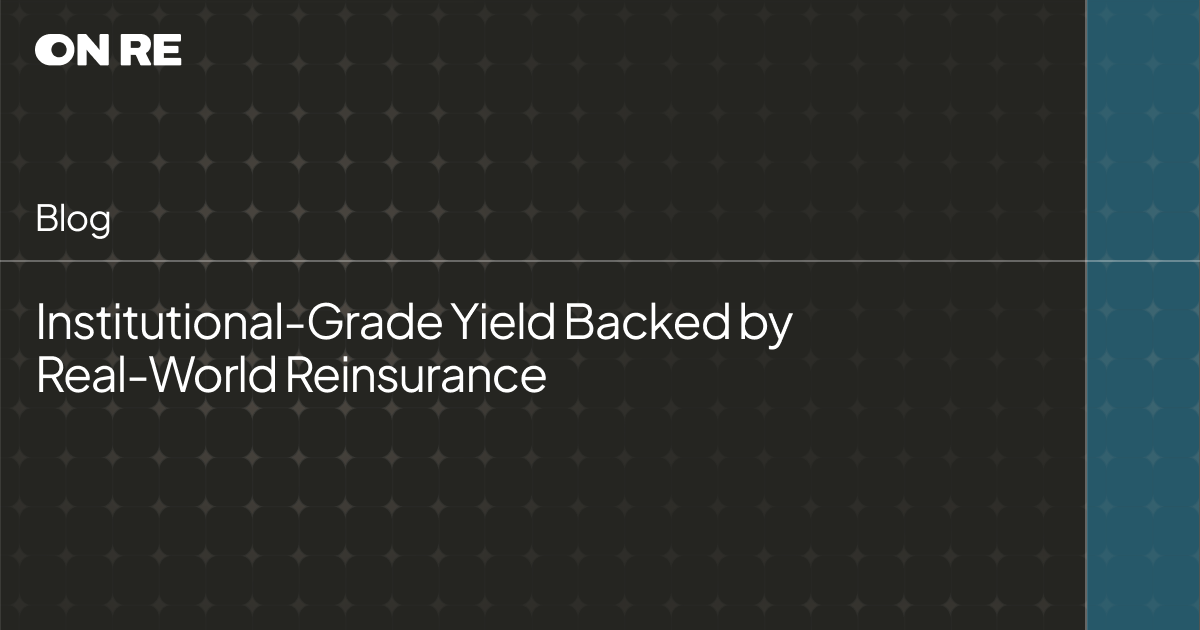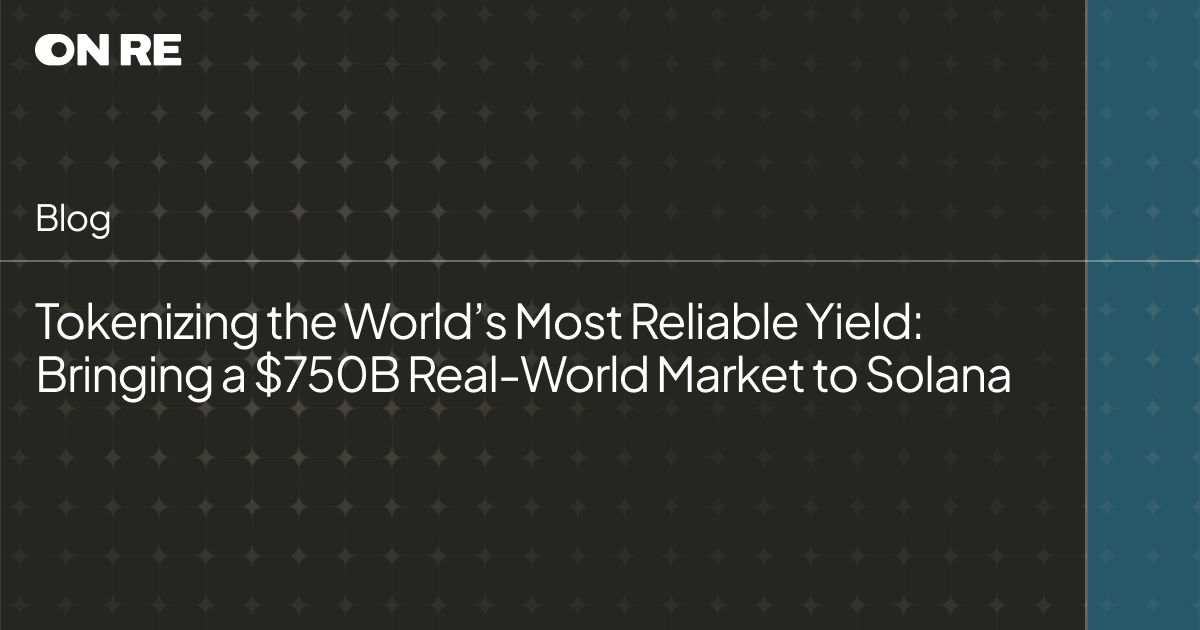Solana’s yield ecosystem has taken big steps forward. We now have LST-collateralized dollars, delta-neutral derivative strategies, and tokenized DeFi portfolios. All of these are important innovations, but they share one fundamental trait: their yields sit on top of crypto’s volatility. Liquidity shifts, funding-rate swings, staking cycles, and market reflexivity shape their performance.
We’ve all watched these systems get tested. Funding can turn negative overnight. Delta-neutral trades can compress when markets tighten. LST-backed models can come under pressure when staking demand slows or the underlying asset pulls back. Even the most transparent designs still inherit the fragility of onchain market structure.
That isn’t a criticism. It’s simply the reality of building yield inside a hyper-reactive environment, and DeFi has thrived because builders embrace that challenge.
But there is one category Solana has not yet had access to: a yield source that does not depend on crypto markets at all. That is the purpose of ONyc.
What ONyc Is
ONyc is a yield-bearing real-world dollar asset backed by a regulated reinsurance underwriting pool domiciled in Bermuda. When someone mints ONyc, their capital enters a legally segregated account used exclusively to collateralize short-duration insurance and reinsurance contracts. This is the same structure that institutions access through insurance-linked securities, catastrophe bonds, and sidecar reinsurance vehicles.
The yield comes from contractual insurance premiums paid upfront, governed by actuarial models and solvency requirements that have been tested across decades of global market cycles. It’s yield generated by underwriting risk, not by speculation, leverage, or incentives.
What ONyc Is Not
ONyc is not a stablecoin. It does not behave like one and is not intended to. It is not corporate credit. Capital in the SAC cannot be used for operations or development. ONyc is not a delta-neutral product, a tokenized hedge fund, or anything dependent on the volatility that drives most onchain yield. It does not rely on staking flows, CEX conditions, liquidity incentives, borrowing demand, or liquidation mechanics.
Its yield is determined by regulated reinsurance processes executed by a team with decades of underwriting experience.
Why This Matters
Reinsurance is slow, collateralized, and governed under a regulatory framework designed to eliminate reflexive risk. It is one of the few yield classes that has remained consistently uncorrelated to both traditional and crypto markets. Bringing this to DeFi requires more than regulation. It requires transparency and composability at the level Solana users expect.
This is why we’re rolling out monthly attestation reports, with the first arriving in early December. We’re expanding liquidity across Kamino, Orca, Raydium, and Loopscale so ONyc can be borrowed, looped, and LP’d natively onchain.
Our transparency dashboard shows flows, reserves, and underwriting logic so users can understand the mechanics behind the yield. We also maintain roughly 20 percent of our capital unallocated to help stabilize secondary markets. Over the past two months, ONyc’s pricing, yield, and NAV have held steady across every platform.
We often say ONyc is the best bear-market asset and the best bull-market collateral, and our performance so far reflects that.
The Mission
Tokenization was never the end goal. The mission is access. The goal is to make yield historically limited to pensions, endowments, and specialized ILS funds globally available, fully liquid, and composable across DeFi.
TLDR: ONyc is a real-world, institutional-grade yield instrument built for DeFi from day one.













